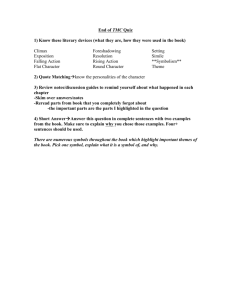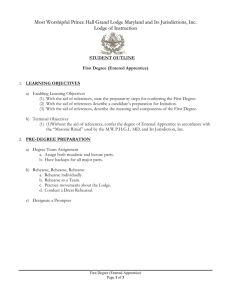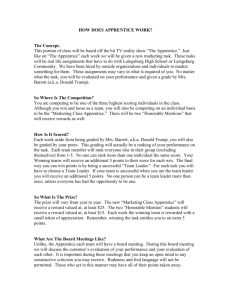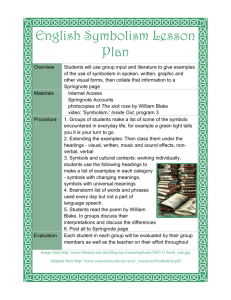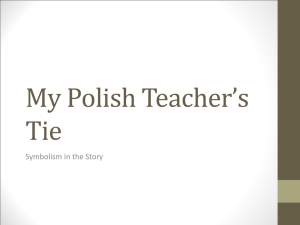The Symbolism of the First Degree of Masonry
advertisement
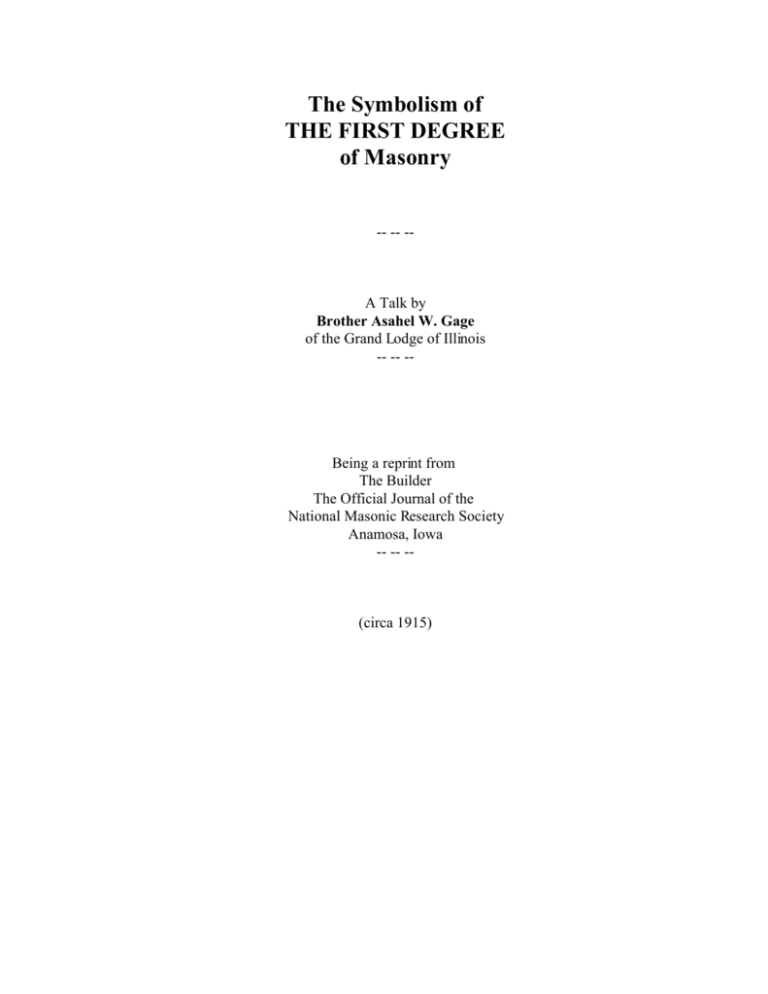
The Symbolism of THE FIRST DEGREE of Masonry -- -- -- A Talk by Brother Asahel W. Gage of the Grand Lodge of Illinois -- -- -- Being a reprint from The Builder The Official Journal of the National Masonic Research Society Anamosa, Iowa -- -- -- (circa 1915) Symbolism of the First Degree In the beginning, the seeker for truth must be duly and truly prepared. In the usually accepted sense, this talk is unprepared. And yet, I spent five years in the :line: of the lodge observing, thinking about and studying Masonry. It is this study and my later contemplations that are my preparation to speak on the symbolism of the first degree. It seems to me that the essence of every Masonic lesson is presented in the symbolism of the first degree. An entered apprentice is a Mason. The second, third, and so-called higher degrees are elaborations. All masonic business was formerly transacted in a lodge opened only on the first degree. The Masonic lessons are practical lessons. They have a dollar and cents value. The Senior Warden tells us that he became a mason in order that he might receive master's, or larger wages. That there may be no misunderstanding as to his meaning monetary wages, he further says, in order to "better support himself and family." If we will look honestly into our own hearts, we will see that we paid the price for the Masonic degrees because we hoped to receive the equivalent or a greater return. If we have not received a return equal to our original and annual investment, it is because we have not applied ourselves to the study of Masonry with freedom, fervency and zeal. But let us understand each other. There is little chance of our making much headway unless we agree on a clear and definite meaning of the terms we use. It is not only good and pleasant, but it is necessary for us o dwell together in unity of thought, if we would arrive at a harmonious conclusion. We should therefore endeavor to clearly define our subject. The word "symbol" is derived from the Greek, meaning "to compare". A symbol is the expression of an idea by comparison. Often, an abstract idea may be best conveyed by a comparison with a concrete object. A dictionary definition of a symbol would be, a sign or representation which suggests something else. Symbolism, therefore, is the science of symbols or signs, the philosophy or art of representing abstract truths and ideas by concrete things. Symbolism is suggestion; in sculpture and painting by form and color, in language by words, in music by sounds. What allegory and parable are in literature; what figurative speaking is in language; the same is symbolism. The symbolism of the first degree is for the apprentice. An apprentice Mason is one who has begun the study of Masonry. Certain qualifications of a Masonic apprentice are a belief in a God, a desire for knowledge, and a sincere wish to be or service to his fellow creatures. Possessing these qualifications, the candidate follow a course of ancient hieroglyphic moral instruction, taught agreeably to ancient usages, by types, emblems and allegorical language. This is symbolism, and symbolism is universal language. It is the language in which God reveals himself to man. The manifestations of nature are only symbolic expressions of God. Children learn best from symbols. Blocks and toys are crude symbolic representations of the more complicated things of life. Most of us learned our alphabet and almost everything else by the relationship or correspondence to things with which we were familiar. We are only children after all. Older children call themselves scientists and make their experiments in their laboratories. Each experiment is a symbol of what is taking place in the real world outside. The apprentice in the moral science should give up the rags of his own righteousness and also all precious metals, symbolical of worldly wealth and distinction, and all baser metals, symbolical of offense and defense, in order that he may realize his dependence upon moral forces only. He should be clad in a garment signifying that he comes with pure intentions to learn the noble art and profit by its lessons, not to proselyte among others, but to develop and improve himself. He is carefully examined to ascertain whether he is worthy and well qualified to receive and use the rights and benefits of Masonry. Being satisfied that he is worthy and well qualified, he is admitted and is immediately impressed with the fact that he must undergo sacrifice and suffering if he would attain the end he seeks. Realizing that the good intentions of the candidate, his own righteousness or even the lodge organization, are not sufficient, we invoke the blessing and aid of God upon our search for knowledge and truth. We follow the system of symbolism. When we would know the truth in regard to things too great for our minds to comprehend, we take as a symbol that which is within our mental grasp. We know that the truth about the things we cannot comprehend, is identical with the truth in relation to the symbol which we do comprehend. The apprentice in his search for Light must start from the North with the Easter Sun in the East, and travel by way of the South to the West, and back into darkness. He again comes out of the North in the East and passes through the same course again and again in his development. Obstacles are met by the apprentice in his progress, so similar that they seem identical. The little occurrences of life may seem unimportant but they determine whether we will be permitted to advance. The apprentice must ever be worthy and well qualified. The apprentice must advance on the square by regular upright steps. the symbolism is so common and universal that it is used in the slang of the street. Obligations are duties assumed. We must assume them if we would advance and having assumed them we are bound by them whether we will or not. Then the light breaks and we begin to see. We find that others, even the most learned, stand like the beginners. The Master is on a level with the apprentice, and extends a hand which is grasped fraternally, and the candidate is raised. there is the key to the Masters Word -- an open book, but he may never find the word itself. Then, as before, the apprentice must follow the course of the Sun. As is the greatest, so is the smallest. In the drop of water are all the laws of the universe. If we study carefully, we will find in the dew drop the particles revolving and whirling in their little circles the same as we find the heavenly bodies revolving and turning in their great orbits, circle within circle and circle upon circle. The seeker after Light always emerges from the North in the East and passes by way of the South to the West and again into darkness, with full faith and perfect confidence that day will follow night. He is continually subjected to tests and trials and always held responsible for what he has learned and for that which has gone before. God's Holy Book, His revelation to us, is the guide in our search for light. To the Jew this Holy Book is the history of Israel, substantially the Old Testament. To the Christian, it si the Old and New Testament. To the Mohammedan, it is the Koran; to the Hindu, the Veda. But whatever book it is, it is the Holy Book of the seeker for Light and that which he believes to be the word of God. the Holy Book together with the square and the compasses are the great lights of Masonry. The lesser lights are the Sun, Moon and Master of the Lodge. the Sun symbolizes the great active principle, the Moon the great passive principle. This symbolism is so commonly accepted that even the uninitiated refer to the Sun as masculine and the Moon as feminine. The Master is symbolical of the offspring of the great Active and Passive Principles. He is the mediator, the child of the two great forces. He sets the craft to work upon their symbolic studies, which is no light responsibility to be assumed by the uninformed. Only chaos and disaster can overtake him who attempts the work he is not qualified to perform. When the apprentice has received his degree he is given his working tools and primary or elementary instructions as to how to go to work. The working tools of an apprentice are the 24 inch gauge and the common gavel. The gavel symbolizes strength or force. Force undirected is the flood devastating all in its path or the idle puff of the unconfined powder which accomplishes nothing. Undirected force is the gavel without the rule. But intelligently controlled, and directed along a proper line by the rule of intellect, the force of the torrent grinds the grain and does the work of many men. The force of the exploding powder prys the rock loose so that the work of months is accomplished in a moment. The operation of universal laws in the moral world is just as ascertainable and understandable as in the physical world. Morals are as susceptible of scientific study as physics. The lambskin apron, a most ancient symbol, signifies that it is only by honest conscientious toil that the moral laws can be learned and applied, and that this toil must be done in purity and innocence. In the lectures which follow the ceremony of the first degree, the apprentice is given preliminary information. It would be too tedious to analyze these lectures at this time. Suffice it to say they are very superficial and of little worth in themselves. They must be understood and felt, if they are to be of any value. Briefly we may describe a Lodge as a place to work, a place to study, analyze, and master the moral science so that we may make use of the moral laws and principles in our every-day life. Symbolically, it is representative of the world, our daily working place. The foundation of the Lodge and its teaching is squareness. It is, however, supported by three pillars; Wisdom, Strength and Beauty. From which we may learn that in every undertaking, when intelligence or wisdom directs, and strength or power works, then beauty and harmony result. The Lodge is covered with the blue vault of Heaven. Blue is the symbol of equality, it is a proper mingling of all colors, it is perfect concord. It is also symbolical of the universality of that charity, which should be as expansive as the blue vault of Heaven itself. Charity is not the giving of money alone. it is also necessary to have charity toward the weaknesses and mistakes of others. This life is a checkered pavement of good and evil, but in the center is the blazing star which is the seed and the source of all life and eternal life. The parallel lines have a symbolism analogous to that of the two pillars, Jachin and Boaz, which is more fully developed in other degrees. The point in the center of the circle between the parallels is sometimes compared to the individual member and sometimes to God who is the center of all things. The circumference may suggest the boundary of man's conduct, or God's creatures, all equally distant and all equally near to Him. Sometimes the circumference is used to depict the endless course of god's power, and His existence without end. This is all speculation, it is symbolism, the contemplation of which will develop the individual. If the apprentice pursues his studies in the moral art with freedom, fervency and zeal, he will receive Master's, or large wages, and be thereby the better enabled to support himself and family and to contribute to the relief of the distressed. == == == == == == == == == 1997-08-01

